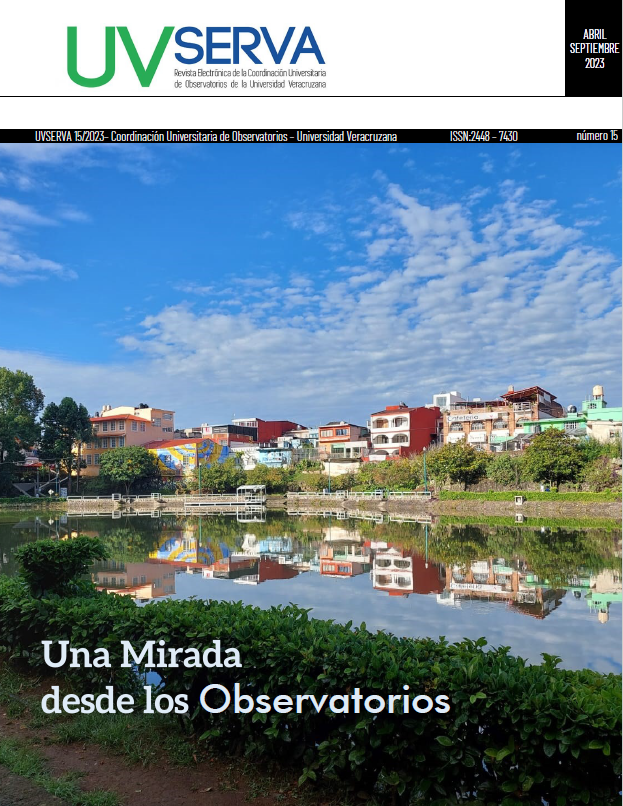Abstract
Bruxism is a disorder of the temporomandibular joint associated with anxiety. For handling, the use of an occlusal guard is indicated. Manual therapy represents a complementary treatment with the potential to reduce symptoms such as pain, level of anxiety and improve quality of life. Prospective clinical trial type study in adult patients diagnosed with bruxism. Population was divided into study group (handling of manual therapy and use of occlusal guard) and control group (use of occlusal guard) following up for 10 sessions. The entire study group decreased temporomandibular joint pain, 28.8% decreased their score to mild and 15% to remission on HARS. Control group had no significant difference in SF-36. Manual therapy combined with the use of an occlusal guard requires positive effects on symptoms associated with bruxism and anxiety.
References
Asociación Americana de Psiquiatría [APA]. (2014). Manual Diagnóstico Y Estadístico De Los Trastornos Mentales DSM-5 (5a ed.). Médica Panamericana.
Braddom, R. L., Chan, L. y Harrast, M. A. (2016). Physical Medicine A Rehabilitation (5a ed.), Elsevier.
Brunier, A. y Drysdale, C. (2022). La pandemia de COVID-19 desencadena un aumento del 25 % en la prevalencia de la ansiedad y la depresión en todo el mundo. PAHO. https://bit.ly/40CJp7W
Capetillo-Hérnández, G.R. y Torres-Capetillo, E.G. (2013). Bruxismo, estrés y ansiedad. En estudiantes de la Universidad Veracruzana. Editorial Académica Española. http://cdigital.uv.mx/handle/123456789/34770
Castañeda, M., y Ramón, R. (2016). Uso de férulas oclusales en pacientes con trastornos temporomandibulares. MEDISAN, 20(4), 530–543. https://bit.ly/3INZSzO
Cruz-Fierro, N., González-Ramírez, M. T., & Vanegas-Farfano, M. T. J. (2018). Modelo estructural para explicar el bruxismo desde la teoría transaccional del estrés. Ansiedad y Estrés, 24(2), 53–59. https://doi.org/10.1016/j.anyes.2018.03.002
Cumplido-Trasmonte, C., Fernández-González, P., Alguacil-Diego, I. M., y Molina-Rueda, F. (2021). Terapia manual en adultos con cefalea tensional: revisión sistemática. Neurología, 36(7), 537–547. https://doi.org/https://doi.org/10.1016/j.nrl.2017.12.004
Instituto Mexicano del Servicio Social (2019). Diagnóstico y Tratamiento del Trastorno de Ansiedad Generalizada en la Persona Mayor. En Guía de Práctica Clínica: Evidencias y Recomendaciones. IMSS. http://imss.gob.mx/profesionales-salud/gpc
Emodi-Perlman, A., Eli, I., Smardz, J., Uziel, N., Wieckiewicz, G., Gilon, E., Grychowska, N., y Wieckiewicz, M. (2020). Temporomandibular Disorders and Bruxism Outbreak as a Possible Factor of Orofacial Pain Worsening during the COVID-19 Pandemic-Concomitant Research in Two Countries. Journal of Clinical Medicine, 9(10). https://doi.org/10.3390/jcm9103250
Gallardo, C., Ascanio, M., y Ascanio, A. (2018). Guarda oclusal gnatológica: técnica de elaboración, procesado y polimerizado por microondas. Revista ADM, 4, 228–236. https://bit.ly/3WKU6Fa
Gobierno de España. (2008) Guía de Práctica Clínica para el Manejo de Pacientes con Trastornos de Ansiedad en Atención Primaria. Unidad de Evaluación de Tecnologías Sanitarias y Agencia Laín. https://bit.ly/42g7wtN
Hernández-Reyes, B., Díaz-Gómez, S., Hidalgo-Hidalgo, S., y Lazo-Nodarse, R. (2017). Bruxismo: panorámica actual. Archivo Médico Camagüey, 21(1), 152-169. https://revistaamc.sld.cu/index.php/amc/article/view/4817/2664
Instituto Nacional de Estadística y Geografía (INEGI). (2021). Encuesta Nacional de Bienestar Autorreportado (ENBIARE) 2021. https://www.inegi.org.mx/programas/enbiare/2021/
Lobo, A., Chamorro, L., Luque, A., Dal-Ré, R., Badia, X., & Baró, E. (2002). Validación de las versiones en español de la Montgomery-Asberg Depression Rating Scale y la Hamilton Anxiety Rating Scale para la evaluación de la depresión y de la ansiedad. Medicina Clínica, 118(13), 493–499. https://doi.org/10.1016/S0025-7753(02)72429-9
Miotto, C.S., Vieira, G.F., Firsoff, E.F.O., Puliti, E., Greven, M., Marques, A.P. (2022). Massage, relaxation, and exercise in bruxism: Is there a difference? A randomized clinical trial. J Clin Med Res. 4(1), 1-19. https://doi.org/10.37191/Mapsci-2582-4333-4(1)-103
Miotto, C.S., Vieira, G.F., Firsoff, E.F.O., Puliti, E., Marques, A.P., Greven, M. (2021). Comparative Effects of Dental Treatment and Two Different Physical Therapy Interventions in Individuals with Bruxism: A Randomized Clinical Trial. J Clin Med Res., 3(6), 1-15. https://doi.org/10.37191/Mapsci-2582-4333-3(6)-095
OMS. (2022, junio 8). Trastornos mentales. Centro de prensa. https://www.who.int/es/news-room/fact-sheets/detail/mental-disorders
Pierson, M. J. (2011). Changes in temporomandibular joint dysfunction symptoms following massage therapy: a case report. International Journal of Therapeutic Massage & Bodywork, 4(4), 37-47. https://doi.org/10.3822/ijtmb.v4i4.110
Pinos-Robalino, P. J., Gonzabay Bravo, E. M., & Cedeño Delgado, M. J. (2020). El bruxismo conocimientos actuales. Una revisión de la literatura. RECIAMUC, 4(1), 49-58. https://doi.org/10.26820/reciamuc/4.(1).enero.2020.49-58
Sánchez-Pay, A. (2018, agosto 3). El uso del Kinovea para el análisis biomecánico desde una perspectiva cuantitativa. Trances, 10(6), 725–738.
Serrano-Gómez, M., Moreno-Pérez, M., Gaitán-Montero, M., Susa-Angarita, A., Gómez-Henao, J., Suárez-Delgado, G., y Méndez, K. (2018). Efectos del masaje terapéutico sobre la ansiedad y el estrés en población pediátrica. Revista de la Facultad de Medicina, 66(3), 357–363. https://doi.org/10.15446/revfacmed.v66n3.60323
Tecco, J. M., y Tecco, S. (2020). Awake Bruxism Treated with Pregabaline in a Patient with Generalized Anxiety Disorder. Psychiatria Danubina, 32(Suppl 1), 33–35. https://bit.ly/3H4bmP1
Ulug, N., Yakut, Y., Alemdaroğlu, İ., & Yilmaz, O. (2016). Comparison of pain, kinesiophobia and quality of life in patients with low back and neck pain. Journal of Physical Therapy Science, 28, 665–670. https://doi.org/10.1589/jpts.28.665
Vázquez-Gallego, J. (2009). Manual profesional del masaje. Paidotribo.
Vicente-Herrero, M. T., Delgado-Bueno, S., Bandrés-Moyá, F., Ramírez-Iñiguez-de-la-Torre, M. V, y Capdevilla-García, L. (2018). Valoración del dolor. Revisión comparativa de escalas y cuestionarios. Revista de la Sociedad Española del Dolor, 25(4), 228–236. https://dx.doi.org/10.20986/resed.2018.3632/2017
Vilagut, G., Ferrer, M., Rajmil, L., Rebollo, P., Permanyer-Miralda, G., Quintana, J. M., Santed, R., Valderas, J. M., Domingo-Salvany, A., & Alonso, J. (2005). El Cuestionario de Salud SF-36 español: una década de experiencia y nuevos desarrollos. Gaceta Sanitaria, 19, 135–150. https://bit.ly/3oHWKPh

This work is licensed under a Creative Commons Attribution-NonCommercial 4.0 International License.
Copyright (c) 2023 Hugo Orlando Fuentes Flores, Sergio Blásquez Sánchez


